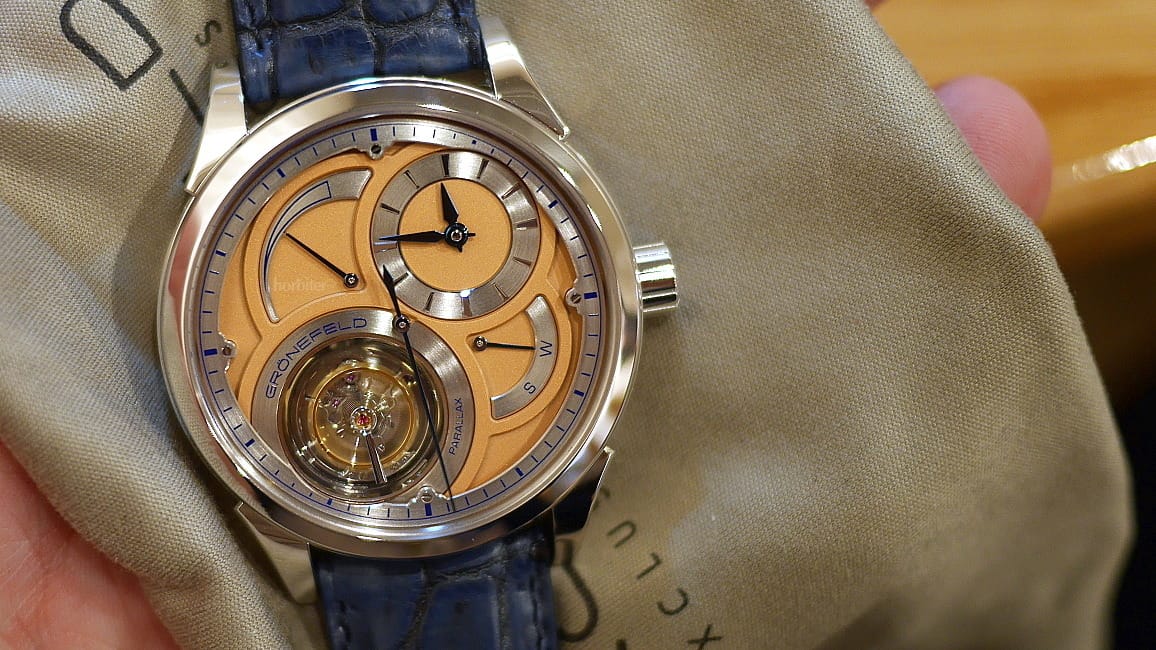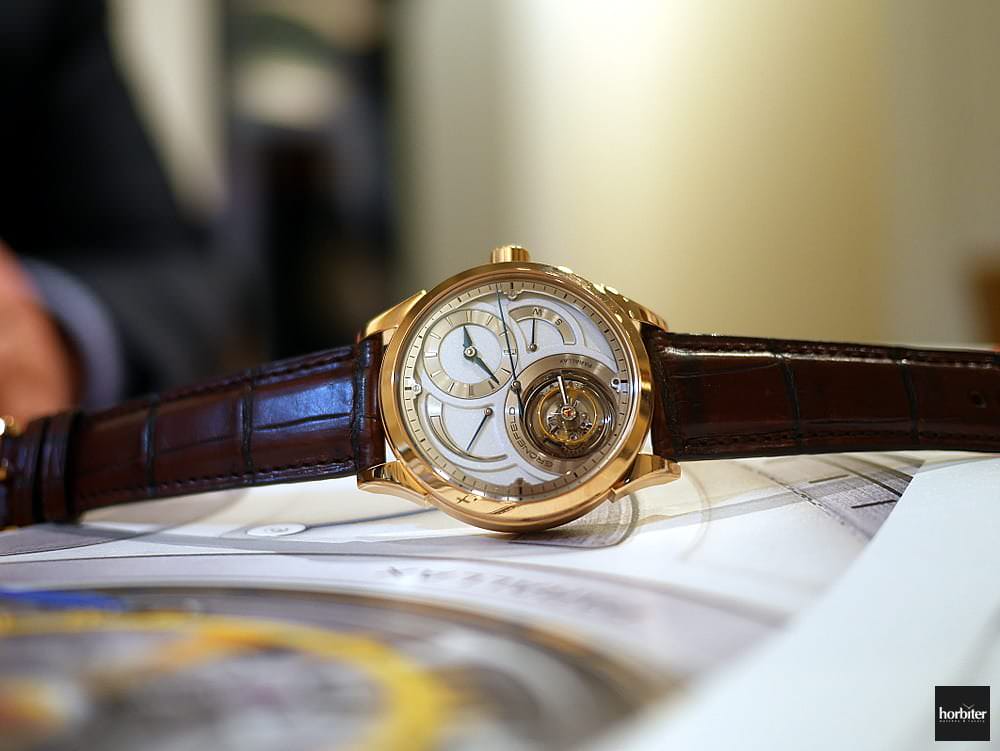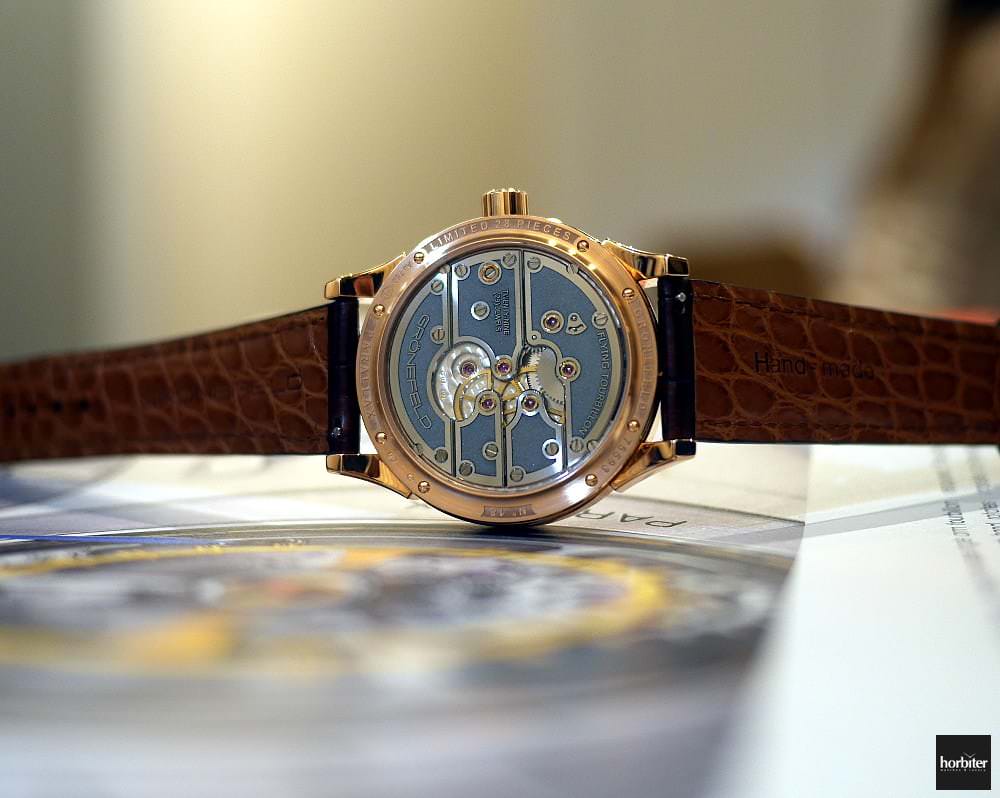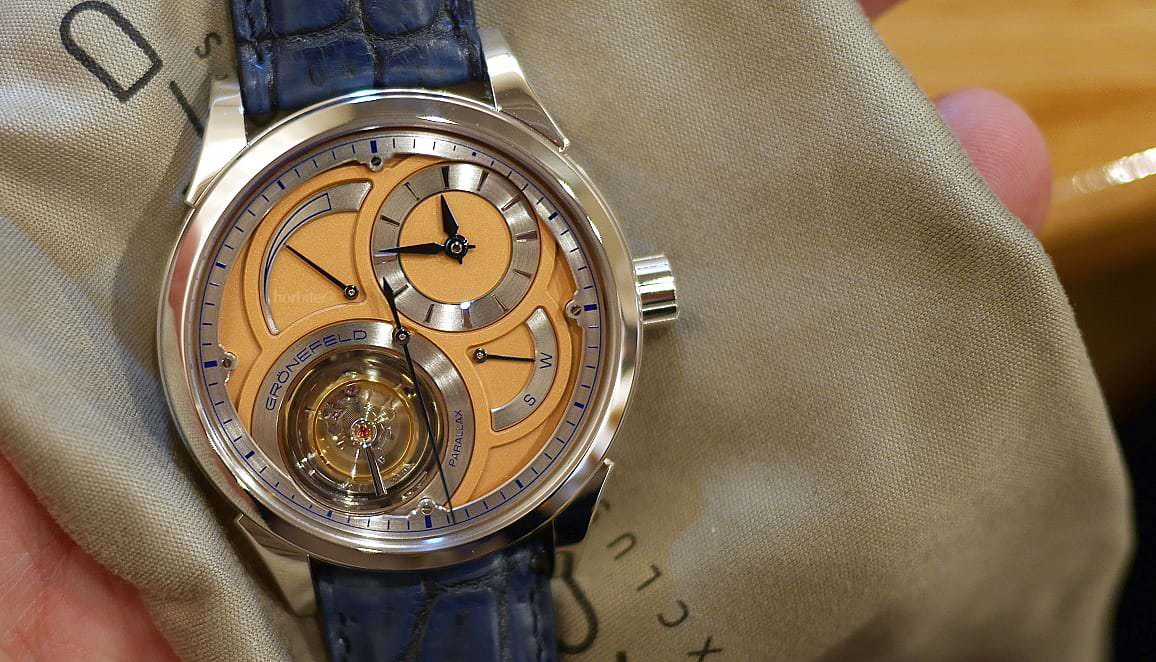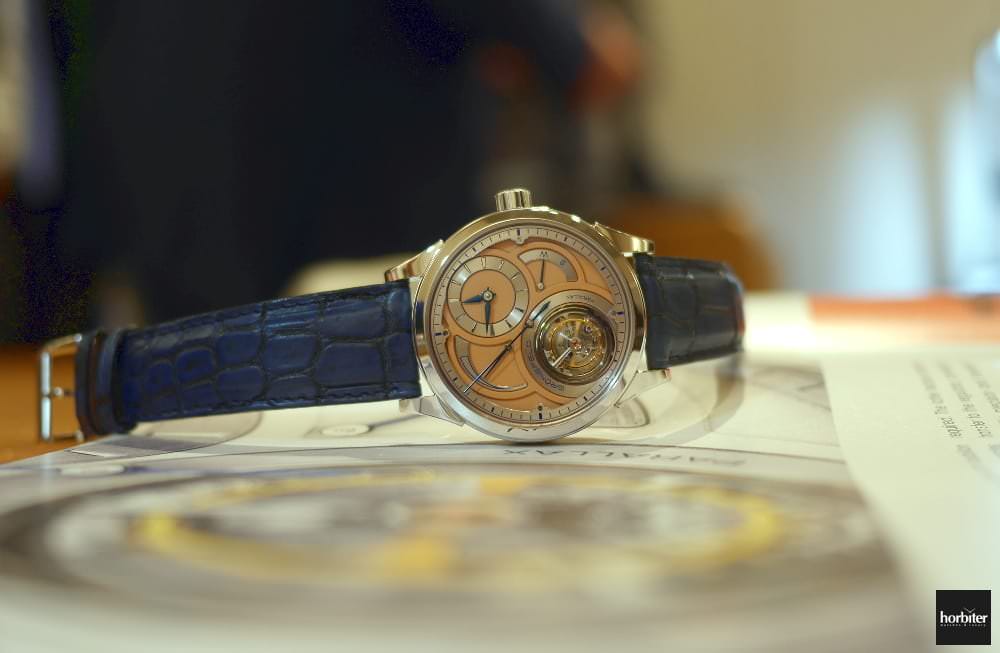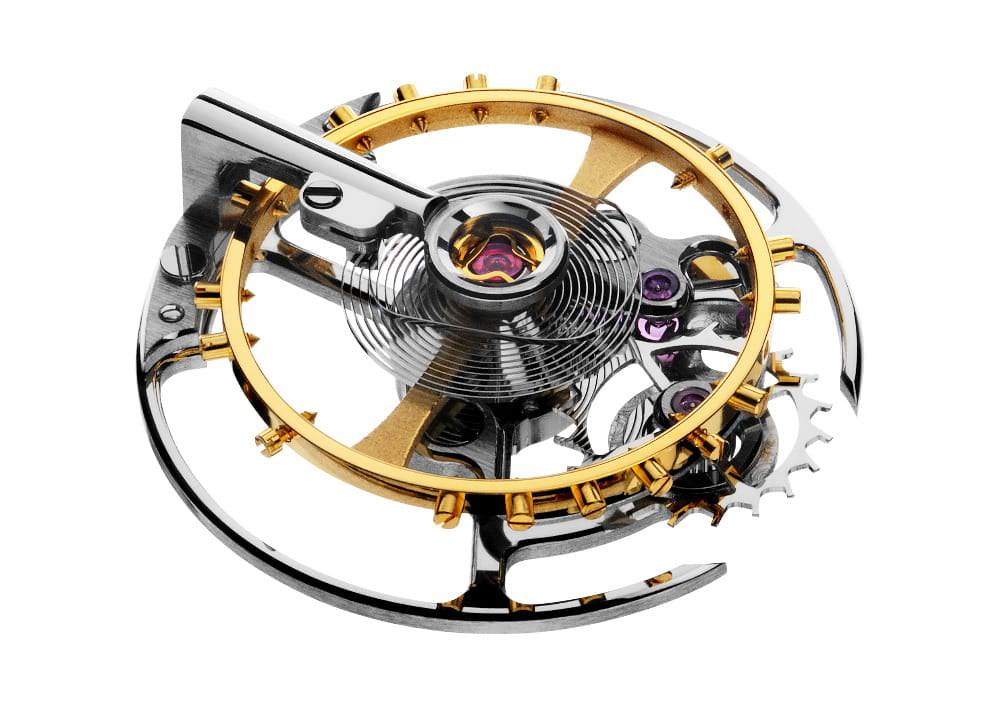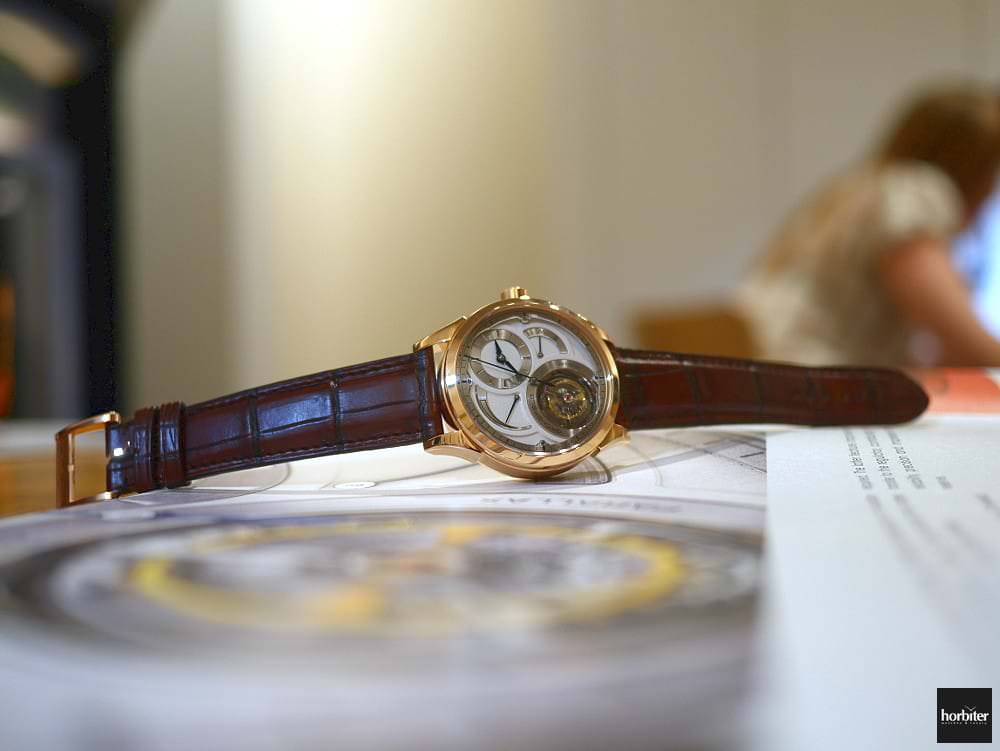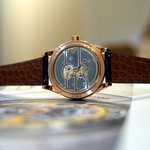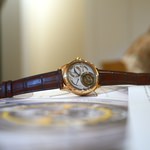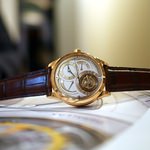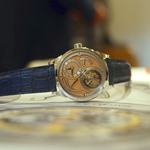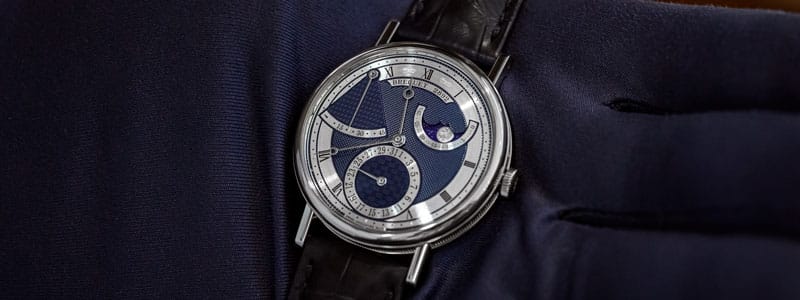Before introducing you to the Gronefeld Parallax Tourbillon, I feel the need to ask my readers for forgiveness. I kindly ask you to forgive me for having waited so long to unveil the pictures of this amazing timepiece and also for not having reviewed earlier the many outstanding technical features of this unique watch. Before meeting Tim and Bart Gronefeld (the two guys who are behind this Dutch brand) I didn't have many information about this brand and I am sure that most people, at least in Italy, shared my same feeling, despite the fact that the company's longstanding tradition in watchmaking dates back to 1912, when the first generation of the Gronefeld family started making history.
The most striking aspect of the Gronefeld Parallax Tourbillon is the way Tim and Bart have re-interpreted this beautiful complication. If we compare it to other brands' proposals, where it seems sometimes as their timepieces were something coming from the past, the two brothers have skilfully managed to prove us that their “out-of-the-box” approach can be successfully applied to even the most superclassic style of watchmaking, an approach that has resulted in Gronefeld being awarded the "Best Tourbillon" prize at the 2014 Grand Prix de l'Horlogerie de Gènève.
(Photo credit: courtesy of Gronefeld, Horbiter®'s proprietary photo-shooting)
Gaetano C. @Horbiter®

